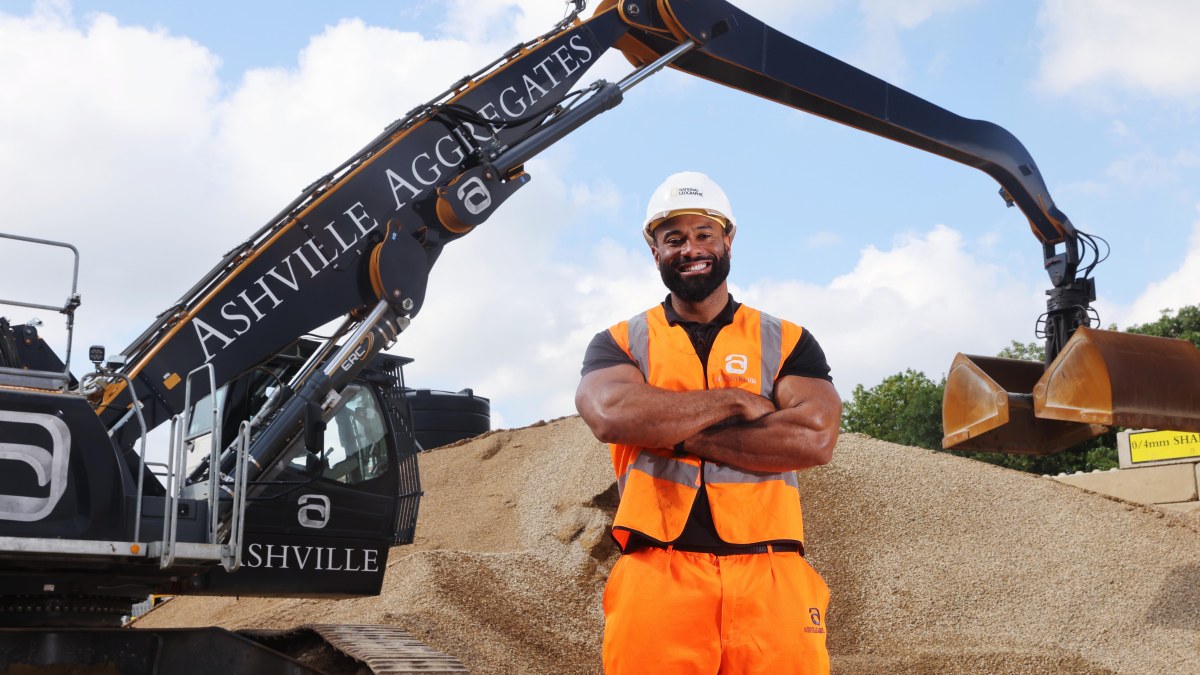“Thus far in my life, I’ve never taken a backward step,” admitted a builder known for constructing £15 million footballers’ mansions after he had part of his business put into administration.
Daniel Ashville, founder and director of Ashville Holdings, tried for months to refinance and sell Ashville Aggregates and Concrete, but was unable to do so. In February the business’s main creditor called in administrators, leaving £3.3 million of debts unlikely to be paid and 33 people without jobs.
“That decision was probably nine months longer than it should have been,” said Ashville, whose efforts to find a buyer for the business are detailed in the administrator’s report.
“It took me a long time to come to terms with it because, thus far in my life, I’ve never taken a backward step. Everything has been forward, forward, more, more, more, more, and I’d never actually sat back and looked at it. Sometimes you take a step back before you take a step forward.”
Ashville, 43, said he made sure all his former employees had jobs the “next morning” in the industry. “I still see all of them now, because the people who they went to work for, they will come into my depot and use our services.”
The aggregates company was founded by Ashville in 2016. He had worked in construction since 2006, largely focused on the renovations of upmarket homes and building mansions for celebrities such as Jack Wilshere, the former Arsenal player.
After working on several basement renovation projects, Ashville decided to buy a lorry to remove the earth created from excavations and spotted an opportunity to sell this service to other businesses.

Jack Wilshere, the former Arsenal player
DAVID PRICE/ARSENAL FC/GETTY IMAGES
“I drove the lorry myself because we didn’t have enough work for a full-time driver,” he said. “When I went to tip the earth, I realised that the same place where I tip the earth, that’s where my supplier is buying the sand from. That’s where they’re buying the stone. I began to supply sandstone and aggregates to my own construction company.”
The administrators noted the company had traded successfully for several years and that it started to “rapidly expand” to meet demand in 2022. This was largely through buying and leasing lorries and plant machines, which were bought through a connected asset holding company, Commercials.
Ashville was forced to leave the builders’ yard the company had been using near Heathrow in late 2023 after the landlord put up the rent, moving to a site across the road. To keep up with the work and allow aggregates to be delivered to the site in bulk, he decided to add a railhead. The administrators described this as an “expensive and time-consuming process which had a detrimental impact on the company’s financial position”.
A buyer for the business was briefly in place, but pulled out. Ashville attempted to find another buyer but ran out of time.
The closure of the business was announced on his YouTube channel in March, calling it the “end of an era”. While he admitted there had been internal errors that led to the collapse of the company, he also placed the blame in part on falling demand. Recent numbers from S&P Global purchasing managers’ index (PMI) showed building in the UK fell in July at the fastest pace since the early days of the pandemic.

Ashville admitted the business had become “an almighty big machine”
Ashville acknowledged there was a need to streamline the wider business, which he said had become an “almighty big machine”. He said: “I’ve worked the last 18 months to trim it down back to something that’s a lot more supple and agile and dynamic, because that was our strength for many years.
“People don’t look at it like, ‘oh, you’re making a business decision’. They look at it like, ‘oh, ‘it’s failed’. Well, that’s one way of looking at it but everything runs its course. That’s the journey of entrepreneurship. Why am I doing something that doesn’t make money? To prove what to who? If it doesn’t make money, you’ve got to stop doing it.”
A former model, he started working in construction after dropping out of a sports science course at the University of North London. He saved money working as a personal trainer for professional cricketers and bought a three-bedroom house for £170,000 in 2003 in Canning Town, east London.
He said: “I didn’t want to stay in school, because I wanted to get out into the working world. I wanted to learn how to drive. I wanted to buy my own car. You have the distractions of trainers and tracksuits. I didn’t come from a background where my mum could afford to do those things for me. So I wanted to get into the full-time working world as quickly as possible, so I could buy all the things that I thought I required.”
After working on his first house, the value of the property went up and he was able to remortgage it and buy more properties. He continued to buy more properties until he was given his first “major job” in 2008 to refurbish a house in Streatham, south London.

Ashville’s National Geographic series featured projects such as a Royal Caribbean cruise ship’s Aqua Dome
DISNEY
He later started working on high-end residential properties in areas such as Harley Street and Knightsbridge. In 2012 he opened a showroom on the Kings Road in Chelsea, displaying fixtures for luxury homes as well as smart home features. The showroom has since closed.
• Inside the £250,000 a month footballers’ mansion
Ashville also started making YouTube videos about his life running his business, which attracted over 550,000 subscribers. This led to a six-part TV show for National Geographic in 2023. He announced in July this year that he would no longer be publishing on YouTube weekly, but would continue to post videos regularly.
Ashville said he will now focus on his luxury construction projects, such as the “forever home” of a UK-based musician whom he could not name. He said he is booked up with construction projects for the next 12 months.
“The future is extremely bright,” he said. “We’re going to be moving back into in-house property developing and we’re going to be pushing on with our rail activities and diversifying within that.”
